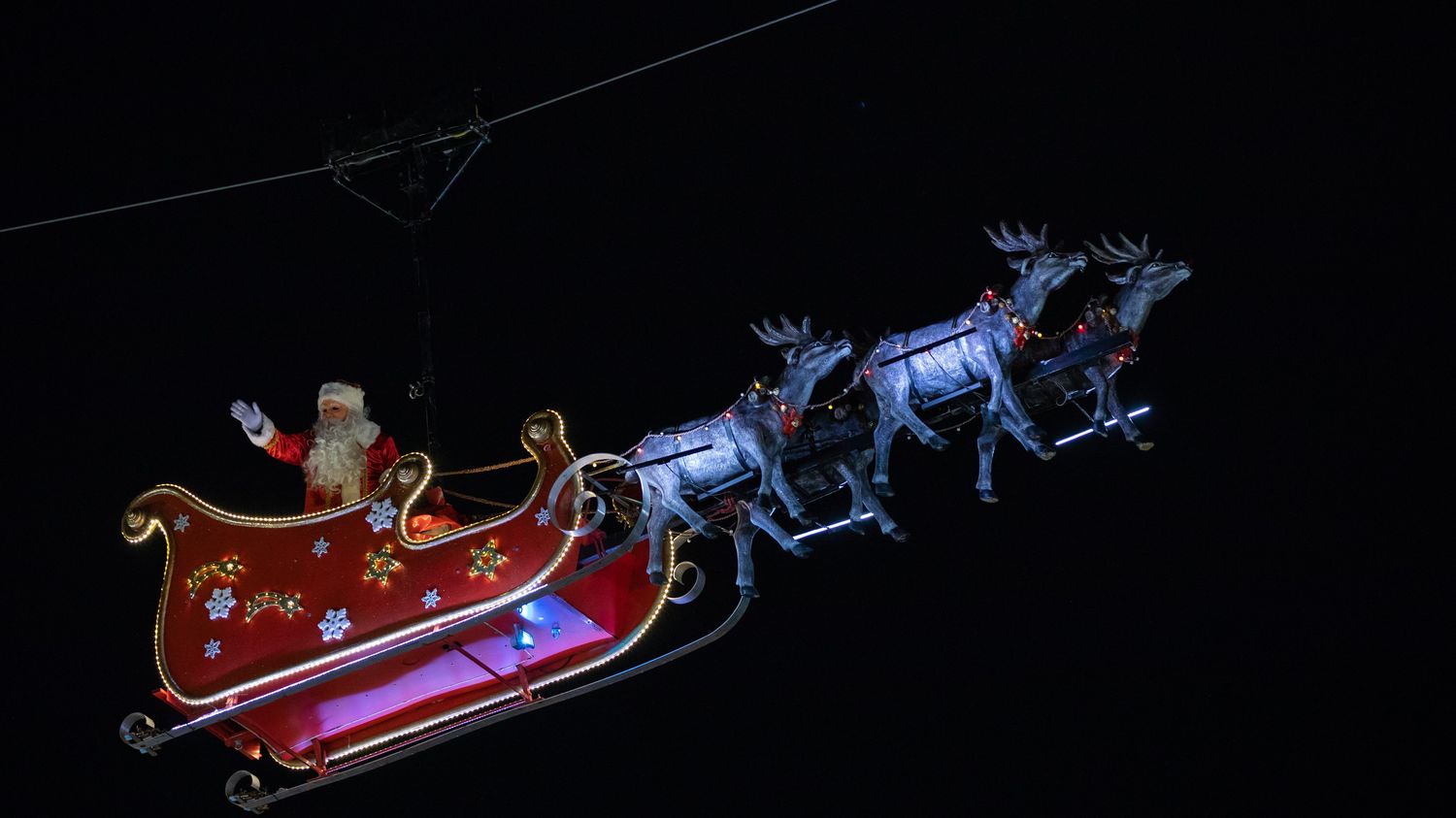Greenhouse gas emissions from the end-of-year holidays in France, according to Ademe, amount to 6,294 tonnes of CO2 equivalent, or 94 kilos per person.
Published
Update
Reading time: 2 min

Since we are all called to sobriety, there is no reason why Santa Claus should escape it, Monday December 25. Besides, his record is not great. The Canadian platform Ethical Ocean looked at the carbon footprint of the sled, gifts, between manufacturing, packaging, and distribution with reindeer which are ruminants that emit methane or the act of pouring a glass of milk on the doorstep. In total, 69 million tonnes of CO2 equivalent are consumed and 99% of it is because of gifts. It is not necessarily very serious, unlike the Ademe study, which is much more serious.
The ecological transition agency carried out a study in 2022 on the environmental impacts of the end-of-year holidays. She compiled the different consumption items such as decorations, food, travel, gifts, waste. All this by cross-referencing the responses of a representative sample of French people and known global data, such as the number of gifts given at Christmas, 300 million, including 12 million of them which are never used. This study also takes stock of the average distance traveled during these holidays, i.e. 177 kilometers, 80% of trips made by car.
Initiatives to save CO2
As a result, greenhouse gas emissions from the end-of-year holidays in France amount to 6,294 tonnes of CO2 equivalent. So bring back to you, to me, that’s 94 kilos per person, or 1% of our annual emissions. More than half of this figure is due to gifts, namely 53 kilos per person followed by transport, 23 kilograms on average. Beyond the observation, what can we do? We can already think about the gifts given. A reconditioned laptop, for example, compared to a new model, is, on average, 50 kilograms of CO2 avoided. Another possibility is to have a Canadian Christmas where everyone draws the name of one of the guests and gives only one gift to that person. With this solution, that’s 34 kilos less CO2. And then, we can also reduce the quantities of food, which are often excessive during these holidays, or reduce the light decorations a little.
Coming back to Santa Claus, he too can make an effort and obviously, he too can do better. An example with reindeer, according to a study by the Technical University of Norway, Rudolf and his colleagues emit around a hundred kilos of methane per year, much more than a ruminant, which could therefore advantageously take a place at the front of the sled. Why not put otters instead?
